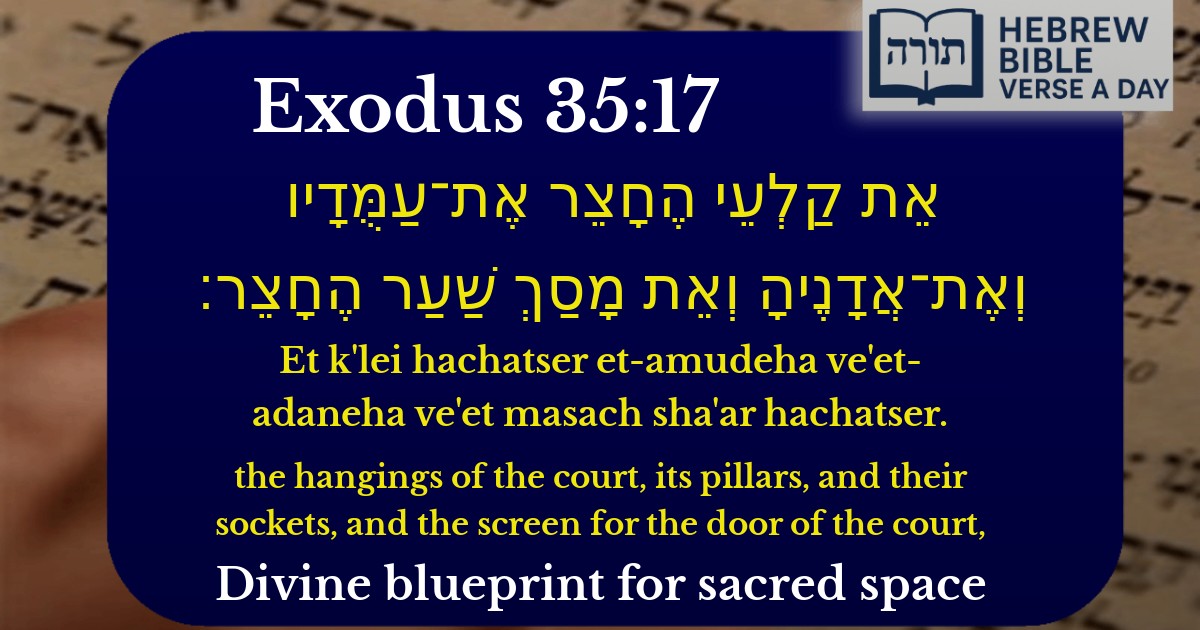Frequently Asked Questions
Q: What is the significance of the hangings of the court in Exodus 35:17?
A: The hangings of the court (קַלְעֵי הֶחָצֵר) refer to the curtains that surrounded the Mishkan (Tabernacle) courtyard. According to Rashi, these hangings were made of fine linen and served as a boundary to separate the holy space from the outside, emphasizing the sanctity of the area where the Divine Presence rested.
Q: Why does the verse mention the pillars and sockets of the courtyard?
A: The pillars (עַמֻּדָיו) and sockets (אֲדָנֶיהָ) were essential for supporting the hangings of the courtyard. The Rambam explains that these components symbolize stability and permanence in serving Hashem. The sockets, often made of copper or silver, provided a strong foundation, teaching us that spiritual growth requires a solid base of Torah and mitzvot.
Q: What was the purpose of the screen for the door of the court (מָסַךְ שַׁעַר הֶחָצֵר)?
A: The screen (מָסַךְ) at the entrance of the courtyard acted as a gate, controlling access to the Mishkan. The Midrash teaches that this screen represents the idea that coming close to holiness requires proper preparation and reverence. Just as the screen filtered who could enter, we must also prepare ourselves spiritually before approaching divine service.
Q: How does the description of the Mishkan's courtyard apply to us today?
A: Although we no longer have the Mishkan, the Talmud (Berachot 8a) teaches that synagogues and study halls are considered 'miniature sanctuaries.' The details of the courtyard remind us to treat these spaces with respect, just as the Israelites treated the Mishkan. Additionally, the boundaries (hangings) teach us to create distinctions between sacred and mundane aspects of life.
Q: Why does the Torah list these details about the Mishkan's construction?
A: The Torah emphasizes these details to show the importance of every component in serving Hashem. The Sforno explains that each part—hangings, pillars, sockets, and screen—had a unique role, teaching that every mitzvah and detail in Avodat Hashem (divine service) matters. This reinforces the idea that holiness is built through careful attention to both major and minor aspects of Torah life.


Explanation of the Verse
The verse (Exodus 35:17) describes components of the Chatzer (Courtyard) of the Mishkan (Tabernacle), including:
Symbolic Meaning
The Chatzer represents the transition from the outside world to holiness. The Malbim explains that each component teaches a lesson: